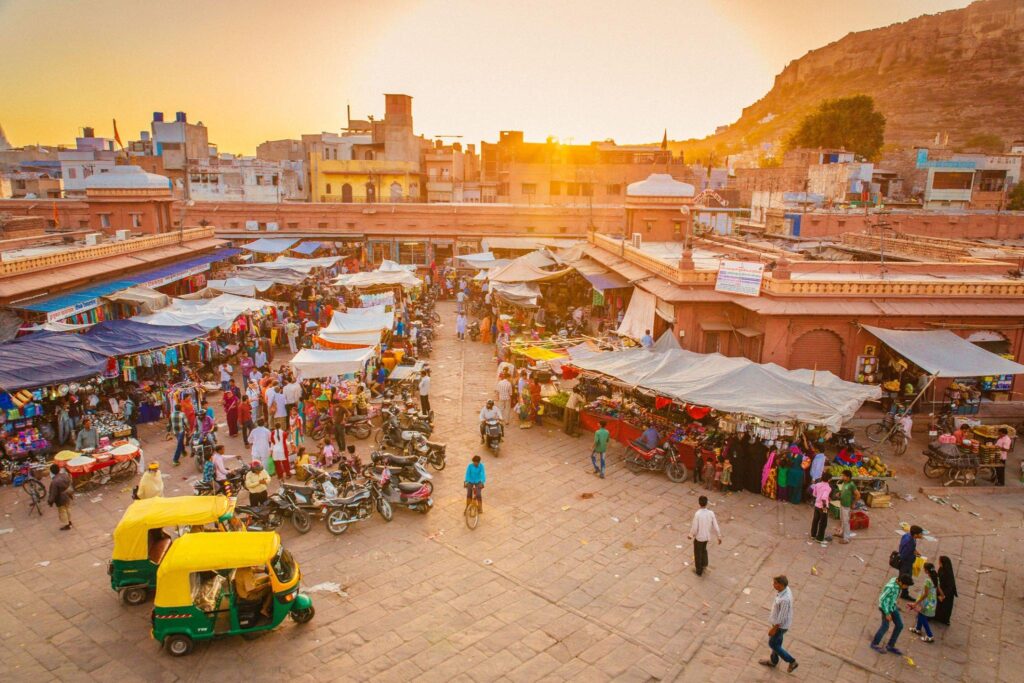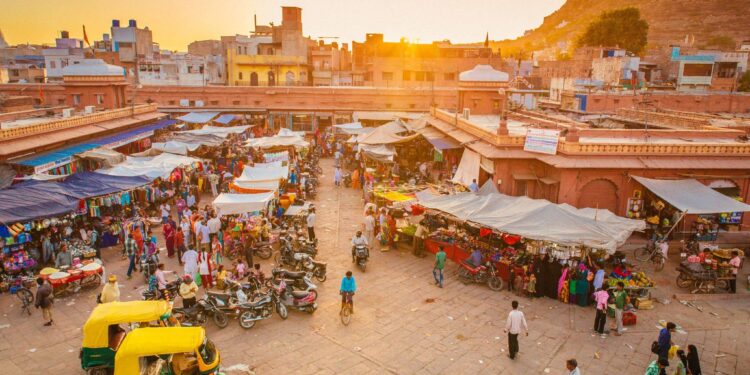Sonakshi Saluja 1
1District Court Berlin-Charlottenburg, Germany 10627
*Corresponding Author Email: sonakshi.saluja@rl-institut.de …
Highlights
- The onset of the COVID-19 pandemic revealed the importance of the prompt availability of various modes of transport
- India has a long way to go and many challenges to overcome to have unrestricted access to mobility
- The transport network in India that was not designed with the needs of women in mind
- Including a female perspective in the planning and implementation of the transportation system will improve urban design
Graphical Abstract

The world is gendered. An argument or discussion about how gendered the world is has no end. I would say some spaces are more equal than others. Transportation is an integral part of our very urban and modern lives. While we may not notice its presence, it is only during unprecedented times that we understand how extensively spread the mobility network is. It was during the onset of the COVID-19 pandemic that many of us realized the importance of the quick availability of various modes of transport, almost operating throughout. The movement restrictions and non-availability of any of the modes almost felt alien to us.
While many countries have extensive and efficient transport networks, India has a long way to go and many challenges to overcome to have unrestricted access to mobility. It was mainly during the British colonial rule in the 1900s that the transport system spread its reach across the country (Donaldson, 2018). The now-extensive rail network was constructed back then for easy transportation of goods and to carry laborers from one end to another of this vast country. India is popularly known for its colors, spices, and people. On our way to becoming the most populated country, with a population of almost 1.340 billion people, we have our own diverse struggles like any other economy. However, access to mobility remains an issue and has been of concern for quite some time now, particularly for women.
Safety is the primary concern for women using the transportation system in India, who often suffer intimidation, threats, general nuisance crimes, assault, groping, and sexually-motivated crimes. In Chennai, for instance, 66% of women reported experiencing sexual harassment while using public transport (Kacharo et al., 2020). Sadly, many women in the country lose out on well-paying, professional, and attractive jobs due to safety concerns if they have to travel far at odd hours. The intensity of the problem varies by region and population. For instance, it is safer and more convenient for women in India to travel in a metropolitan city at odd hours than in a Tier 2 or a Tier 3 city. Moving about using public transport is more difficult in rural areas. Poor roads and infrastructure add to the woes of traveling as a woman together with inadequate employee gender training, unwanted delays, poorly lit roads, and lack of female staff, which make public transport increasingly unsafe for women. These limit the mobility of women in India further.
In addition to safety concerns when using a transport network that was not designed with the needs of women in mind, societal norms compound women’s mobility problems in the country. Women and other individuals of different sexual and gender minorities go through much harsher scrutiny and judgments. Usually, female members of a household are not allowed to travel without permission from their parents or spouses. In some cases, women are only allowed to travel in the company of a male member of the household. When they are allowed to travel, women mostly do not travel for leisure, to meet friends, or for personal commitments since, men, unlike women, are not typically constrained by domestic responsibilities (Tilley & Houston, 2016). Women, on the other hand, travel to fulfil household duties and chores, to pick up and drop off children at school, or to take the elderly to nearby clinics or hospitals. This depicts a rather clearer picture of the kind of expectations placed on women in society, who are often subjected to standards that limit mobility such as the cultural norms that frown upon women roaming on their own, particularly at night.
The third issue limiting women’s mobility in India is limited vehicle ownership. Since India is primarily a patriarchal society, women rarely get the chance to own property or assets. The difference in vehicle ownership among them is quite significant in urban and rural spaces. In urban or semi-urban areas, a substantial number of women own and drive their own vehicles. While the percentage might not be equal to the rate of vehicle ownership by male members of society, it is still substantially higher than in rural areas. The gap increases when households have extremely limited means of income and the work carried out by male bread earners holds more importance.
Finally, last-mile connectivity acts as a major hindrance to efforts to make any city entirely accessible. The idea behind sustainability is to not build more cars or highways, but for the government to develop different and better modes of sustainable, easily accessible means of transport by building and promoting bicycle and walking lanes and providing access to public transport at all times. The implementation of these ideas would not only reduce the congestion on the road but also promote the usage of public transport. Although India has some of the most well-developed transport networks in Asia, it still lacks last-mile connectivity, especially in rural areas. While the urban centers have sophisticated systems of metros, rails, buses, and on-demand cabs, the rural sector struggles in terms of even basic infrastructure.
The above problems give way to noticeable solutions to make public spaces safer at all times of the day. First, more female and minority members of society should be involved in the decision-making process. Second, the government should require gender sensitivity training for public transport workers, employ more female drivers, and strengthen the infrastructure, among others. It is crucial that women are not just employed in the administrative departments of the sector but also technical fields and decision-making positions. This would help in better urban design by including women’s perspective in the planning and implementation of the transportation system.
However, some solutions are less noticeable than others and therefore, more difficult to implement. To make transport and mobility safer for women and minority members of society, it is crucial to make public spaces more inclusive. Women feel relatively safer when there are other women around. This also presents itself as a cyclical problem since spaces become more inclusive when they are safer for everyone and vice versa. Similarly, to increase the ownership of vehicles, women should have well-paying jobs and stable earnings. This can only be achieved if the government promotes education for the girl child from the very beginning and there are lesser dropouts in middle and higher classes. Further, it is essential that the girls are not married off at a young age and have the authority and autonomy to build their life.
Finally, it is imperative that we have a healthy society with an open and equity mindset. While this could take a while, consistent and systematic knowledge workshops, and promoting active participation of women and minority members in society could help accelerate the process. Eventually, it should be realized that the main aim behind mobility is to transport people and goods in a timely and efficient manner. Therefore, it is in the favor of both the providers and the customers to have easy, unrestricted, and equal access.
Author(s) Summary
References
Donaldson, D. (2018). Railroads of the Raj: Estimating the Impact of Transportation Infrastructure. American Economic Review, 108(4-5), 899-934. [Google Scholar] [CrossRef]
Kacharo, K., Teshome, E. & Woltamo, T. (2022). Safety and Security of Women and Girls in Public Transport. Urban, Planning and Transport Research, 10(1), 1-19. [Google Scholar] [CrossRef]
Tilley, S. & Houston, D. (2016). The Gender Turnaround: Young Women Now Travelling More Than Young Men. Journal of Transport Geography, 54, 349-358. [Google Scholar] [CrossRef]
About this Article
Cite this Article
APA
Saluja S. (2023). India’s Access to Mobility: Through the Gender Lens. SustainE. 1(1),147-150.
Chicago
Saluja Sonakshi. “India’s Access to Mobility: Through the Gender Lens.” SustainE 1, no. 1 (May 1, 2023): 147-150.
Received
15 November 2022
Accepted
25 April 2023
Published
1 May 2023
Corresponding Author Email: sonakshi.saluja@rl-institut.de
Disclaimer: The opinions and statements expressed in this article are the authors’ sole responsibility and do not necessarily reflect the viewpoints of their affiliated organizations, the publisher, the hosted journal, the editors, or the reviewers. Furthermore, any product evaluated in this article or claims made by its manufacturer are not guaranteed or endorsed by the publisher.
Distributed under Creative Commons CC-BY 4.0
Share this article
Use the buttons below to share the article on desired platforms.













